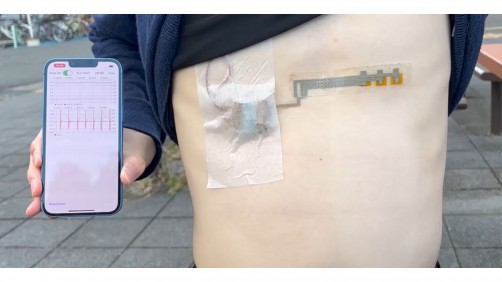Researchers want to leverage the centuries-old art of cutting paper into designs to develop a sensor sheet that can stretch and breathe alongside the skin while collecting electrocardiographic data, according to a press review. In Applied Physics Reviews, the sensor made by researchers in Japan uses cuts in a film made of polyethylene terephthalate (PET) printed with silver electrodes to fit on the chest and monitor the heart.

“In terms of wearability, by applying kirigami structure in a PET film, due to PET deformation and bending, the film can be stretchable, so that the film can follow skin and body movement like a bandage,” said author Kuniharu Takei, from Osaka Prefecture University (Osaka, Japan). “In addition, since kirigami structure has physical holes in a PET film, skin can be easily breathed through the holes.”
Unlike the related origami, which involves strictly paper folding, the art of kirigami extends its methods to paper cutting as well. Such a technique allows relatively stiff materials, like PET, to adapt to their surfaces, according to the press release.
The team found the optimal size of the sensor is roughly 200 square millimeters with a distance of 1.5cm between electrodes. At that size, the sensors could detect enough signals from the heart to be used in a smartphone application, the press release relayed.
“The major challenge was how to realize the kirigami structure without using a precise alignment process between the silver electrodes and kirigami cutting,” Takei said.
The device with the sensor could accurately and reliably relay heart data across multiple people doing many types of everyday movements, such as walking or working while seated in a chair, according to the press release.
Looking into the future, the researchers aim to integrate more sensors to measure multiple types of data from the surface of the skin to help with the early diagnosis of disease, including future medical trials.
“We understand that the new mechanism or new material developments make a better impact on the field,” Takei concluded. “However, without improving the stability, it cannot be used for practical applications, even if the sensor performance is excellent.”









